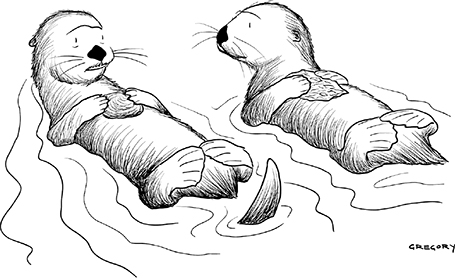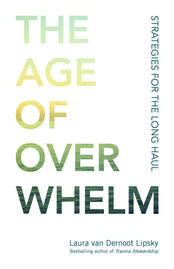
Download PDF Excerpt
Rights Information
The Age of Overwhelm
Strategies for the Long Haul
Laura van Dernoot Lipsky (Author)
Publication date: 06/07/2018
Find out more about our Bulk Buyer Program
- 10-49: 20% discount
- 50-99: 35% discount
- 100-999: 38% discount
- 1000-1999: 40% discount
- 2000+ Contact ( bookorders@bkpub.com )
- Library Journali>
"The truth is that there is almost no place left to hide from overwhelm. The media is constantly asking us to be upset about something new. Our neighbors attempt to relieve their stress by making nerve-shattering noise all night. If you move to an unpopulated rural area to escape the overstimulation, the next thing you know they're building a high-density housing development next door, or illegally dumping toxic waste in your backyard, or using eminent domain to take your home and put a superhighway through. Overwhelm is becoming the definitive problem of our age. This book asks readers who are overwhelmed to begin their recovery process by believing in change (individual and collective change). But before you cross this book off as just another “change yourself, change the world” musing, consider the real-world applications which Lipsky has created. Building on her cutting-edge work with trauma exposure (Trauma Stewardship), she has developed clear-cut guidelines for digging out from under overwhelm and reclaiming a sense of balance and empowerment. Let your customers know that she'll help them learn how to recognize what they can and can't control, how to take a moment to recalibrate, and how to remember that they are ultimately responsible for responding appropriately to their situation. With examples, from the segregated south to The Gates Foundation, she shows how seemingly small individual actions, ripple through people's lives with ongoing manifestation. Lipsky shows us that we can do this if we are willing to try."
- Anna Jedrziewski, Retailing Insight
“From tips on how to disconnect less and be in the world more to better handling distraction to encourage focus and higher energy, this provides a powerful testimony to the force of positive thinking and retaking control of one's life, and is highly recommended for anyone who would tackle modern pressures with a more effective game plan.”
- Midwest Book Review
http://www.midwestbookreview.com/calbw/sep_18.htm#socialissues
“Scientists worldwide are devastated by the knowledge that humans are causing the mass extinction of life on earth. However, in the face of epic overwhelm, this thoughtful, generous, and inspiring book offers a path forward and a ray of hope for all of us.”
- Dr. Vance Vredenburg, Professor of Biology, San Francisco State University; University of California Berkeley; and the California Academy of Sciences
“This is a useful guide for managing the perpetual, trademark overwhelm of adolescence, and it also realistically addresses my experience as a first generation Ethiopian American. With specific ideas to help shift attitudes and habits, this book is a great resource for teens and adults alike.”
- Faisal Mustafa, high school student
“As a reminder that we must tend to our own needs so that we can be fully present for others, this book is of great significance. The Age of Overwhelm should be within hand's reach of every judge's bench, every court administrator's desk, or anyone serving others in trauma-saturated environments. It's a timely resource for us all.”
- Hon. Elizabeth Berns, King County Superior Court
“This resource is an invaluable addition to our personal tool kit, offering direction to help us recognize and address chronic exposure to stress within our lives and our world, and providing important guidance to help reduce and heal that stress.”
- Dr. Arne Graff, Division Chair, Child Abuse Pediatrics, Mayo Clinic
“The Age of Overwhelm tells the truth about how today's culture of overdrive, distraction, rapid response, and scarcity affects our lives, our relationships, and our well-being. This book shows us how to not just cope and survive, but how we can thrive by creating conditions for more contented lives.”
- Deepa Iyer, author of We Too Sing America
“With this profound and critically important book, Laura shows us how to maintain hope, well-being, and integrity when faced with challenges greater than we can solve on our own. Laura's first book, Trauma Stewardship, has become a cornerstone for the international community. The Age of Overwhelm will, without a doubt, do the same.”
- Françoise Mathieu, author of The Compassion Fatigue Workbook
O N E
What Does Overwhelm Look Like?
“Your chances of becoming an alcoholic are higher. You are more likely to get divorced. Chances are you will contemplate, attempt, or commit suicide.”
Bullshit. That was my immediate reaction as the risks of trauma exposure in my new career were spelled out in a classroom at the state police academy. Not me. Maybe that quiet guy in the next row, but not me. I had my shit together. Period.
I graduated the basic police course at the top of my class, worked hard on the road, and after a couple of years landed a special team assignment. I was on a roll. Then I stopped at the grocery store.
It was my Friday night and I was ready to start my weekend. I would stop at the store to grab a bag of chips and my favorite beer. Three minutes tops. As I walked toward the Ten Items or Less express lane, a man pushing a cart slid in front of me. Slight delay, but no big deal. At least until I counted the items in his cart.
You motherfucker. There are twelve items in your cart. Can you not read the sign? Do you not know the common rules of our society? You are fucking with my timeline. Breathe. Just breathe and let it go. Wait . . . did you just pull out a fat stack of coupons and start slowly searching through them? You unbelievable asshole. I fantasize that you pull a gun on the cashier and demand the money in the register. Green light. In one smooth motion I drop my beer, lift my shirt, and draw the Glock from my right hip. I put two tightly grouped rounds into your temple from close range and watch you drop, lifeless, to the floor.
I sat in my car for a good ten minutes before I could drive. My hands were trembling with rage. My mind felt strangely satisfied with the execution fantasy. I had lost my shit. Over twelve items in a shopping cart.
Now? I have spent more than my fair share of time inside a whiskey bottle, and my marriage ended one month shy of our 25th anniversary. I have never contemplated, much less attempted, suicide. But I can’t call bullshit on the possibility anymore.
—Deputy Sheriff
The state of overwhelm has many shades. It is a continuum. But many of us are, in fact, experiencing some degree of overwhelm as a natural response to all that we encounter—whether we experience that as an occasional flutter of doubt, more frequent flooding of emotion, or gripping despair that we carry with us throughout our days. In an essay on the Chinese dissident Xu Hongci, author and journalist Evan Osnos wrote, “What is the precise moment, in the life of a country, when tyranny takes hold? It rarely happens in an instant; it arrives like twilight, and, at first, the eyes adjust.” So, too, is the slow descent of overwhelm. It comes like dusk and your eyes slowly adjust to it without at first knowing that the light is fading.
Personal overwhelm
Overwhelm can surface any number of ways in our individual selves. In a global survey conducted by Forbes in 2015, 14 percent of almost 3,000 people surveyed said they feel chronically overwhelmed. And according to the World Health Organization in 2017, “depression is the leading cause of ill health and disability worldwide.”
“I feel tremendous pressure to frolic.”
The overwhelm starts early. The condition seems especially prevalent in schools, and the never-ending refrain I hear from students I work with is, “I’m so stressed out.” Unfortunately, research backs this up. In a 2017 article titled “Why Are More American Teenagers Than Ever Suffering From Severe Anxiety?” writer Benoit Denizet-Lewis described “a doubling of hospital admissions for suicidal teenagers over the last 10 years, with the highest rates occurring soon after they return to school each fall. In its annual survey of students, the American College Health Association found a significant increase—from 50 percent in 2011 to 62 percent in 2016—of undergraduates reporting ‘overwhelming anxiety’ in the previous year.”
In the workplace, it’s no better. I will never forget sitting in a staff meeting with a group I’d been asked to consult with on what may feel overwhelming about their work, and watching as a steady stream of tears ran down a young man’s face. When he finally spoke, he said softly, “I feel like every day I have to kill a part of myself to do this job. Every single day.”
A significant challenge of being overwhelmed individually, regardless of the cause, is how incredibly hard it can be to have or maintain awareness that you are actually overwhelmed. This would be a totally different conversation if we consistently and reliably had insight about our overwhelm, but for most of us that’s not how things work. The continuum of overwhelm can range from feeling surges of overwhelm occasionally (after which you reset and move on) to spending years trying to keep your head above water. Or you may have had that experience when in an incredibly mundane moment, you have an epiphany of sorts—either realizing how overwhelmed you are or recognizing an absence of overwhelm and consequently gaining insight into how overwhelmed you have been.
That was my experience once when I leaned over to kiss my sleeping child on her cheek and had an immediate sense of, “I am not overwhelmed right now.” As I stood up, the weight of how overwhelmed I’d been, for so long, descended on me. I flashed back to the afternoon my mom died when I was thirteen. I was out on the sidewalk when the incredibly kind, very cool leader of our youth group found her way to me through several others who had gathered. She first gave me a huge, not-needing-anything-from-me hug. Then she stepped back a few inches, gripped my shoulders, looked straight into my eyes, and said, “You’re in shock. This is how you may feel for a while, and it’s okay. This is just what happens during times like this. It’s okay.” That couple of minutes has stayed with me, and it’s informed countless conversations I’ve had with others throughout the years when I have been called in to try to help someone. Interrupting isolation during a moment of acute overwhelm, or throughout the duration of ongoing overwhelm, can be a true gift. Sometimes all it takes is helping someone acknowledge that this is what overwhelm looks like.
Then there are times with overwhelm when, until it plays out, there’s no way to know how deep it will cut. I remember sitting in a meeting with high school educators trying to organize ongoing support for a young family friend who had suddenly lost her father in an accident. We outlined action steps for hours. One after the other. And partway through the meeting, one of the educators paused, the room got quiet, and she said, “Of course, the family can’t even begin to understand at this time all that they have lost.”
We see this frequently with disasters, too. Of course, you know the event is catastrophic, but the evolving sense of being overwhelmed is heartrending. Alyssa Mastromonaco, former White House deputy chief of staff, spoke to this in the context of how important an effective government response is to mass overwhelm. Days after Hurricane Harvey, she said, “Right now, people are happy to be alive. They are happy to know that their families are okay. In about, I don’t know, a couple days . . . any day now . . . people are just going to be like, ‘Where the fuck is my shit? I want to go home!’”
“ The body keeps the score: If the memory of trauma is encoded in the viscera, in heartbreaking and gut-wrenching emotions, in autoimmune disorders and skeletal/muscular problems, and if mind/brain/visceral communication is the royal road to emotion regulation, this demands a radical shift in our therapeutic assumptions. . . . The challenge of recovery is to reestablish ownership of your body and your mind—of your self. This means feeling free to know what you know and to feel what you feel without becoming overwhelmed, enraged, ashamed, or collapsed.”
—Dr. Bessel van der Kolk, founder and medical director of The Trauma Center
Raising our awareness of where we are individually on this overwhelm continuum is something we aim to do throughout this book. As one colleague shared with me, she had no idea to what degree her internal struggle was manifesting externally until her toddler said to her, “Mama, what’s wrong with your face?”
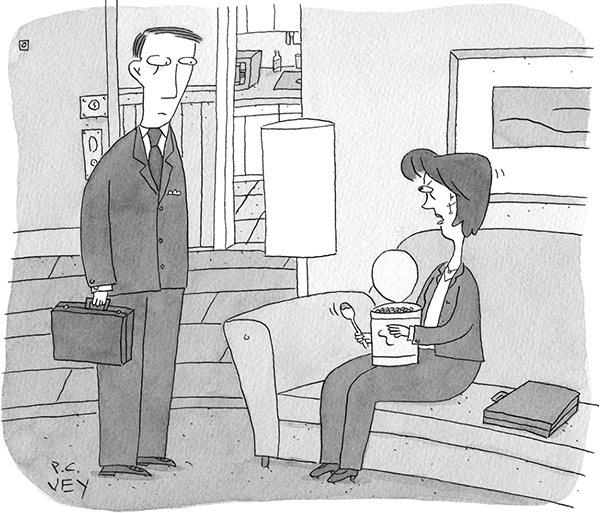
“You come home to find me eating beans from a giant can. How do you think my day went?”
I still am surprised by how unaware of my own overwhelm I am at times. I was once attending my daughter’s basketball game and sitting in a particularly boisterous section. It was during a time when I’d been called in on several school and community shootings and was continuing to meet with those devastated by the losses. I knew I was tired, but I didn’t realize how on edge I was until early in the first quarter when some of the extra loud fans started yelling, “Watch the shooter!” every single time someone went up for a shot. I felt my heart beat faster and heat rise within me. I tried to talk myself down and practice all the somatic grounding principles I’ve learned. But by the second quarter, I’d moved as far away from the game as possible while still having the court in sight. Sometimes, once our nervous system gets involved, it can be incredibly challenging to come down. I imagine lots of folks went to bed that night with three-pointers and excellent defense flashing through their consciousness. For me, it took days to lose the echo of “Watch the shooter!”
Relationships and family overwhelm
Overwhelm within our relationships and families can be challenging to assess, considering how skilled many are at portraying that our entire lives are “fine” and the extreme self-marketing campaigns that so many—consciously or unconsciously—participate in on social media. Social media is complicated, and there are countless benefits that come from all the opportunities we have to express ourselves and connect online. Even so, it can seem from the outside that everyone else’s life is absolutely and completely divine, when what’s happening on the inside, of course, is not as readily promoted. And there is no shortage of evidence of the increased isolation and demoralization that folks (both young and old) can feel when it appears that everyone else is out having fun on Saturday night, on vacation, in glorious relationships, or parenting the most spectacular children ever. Social media is not the only driver of a sense that one must perform the perfect life for outside observers. From classic pressure to keep up with the Joneses in neighborhoods or congregations to the ominous state scrutiny toward immigrants, refugees, and people living in public housing or seeking community services, the stakes for living up to external expectations can be ineffable.
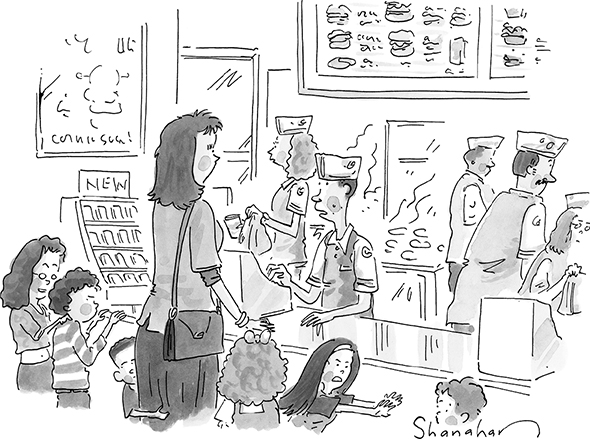
“With four or more kids’ meals, you get a shot of bourbon.”
There have always been generational challenges, one generation to the next. According to research from The Gottman Institute, for example, “67% of couples experience a precipitous decline in relationship satisfaction in the first three years of a baby’s life.” And as we get older, the complexity of relationships and family life often increases. One of the most common things folks share with me when I work with groups is how impossible their lives feel as they try to balance the needs of their own lives and/or that of their children while simultaneously caretaking aging parents, struggling siblings, or other family members in need. Also, I have had the privilege of working with young people for more than three decades, and lately the extent of stress and complexity I’m witnessing envelop their relationships—with each other, family members, and other adults in their lives—is like nothing I’ve ever seen. For young people growing up in today’s societies, man can it be rough dealing with the adults who are raising them. For some this is particularly treacherous, whether it be because your folks were born in another country than where you were born or raised or because your sexual or gender identity is in conflict with those who are raising you, leaving you feeling unsafe not just out in the world but often under the roof you’re meant to share.
Community and society overwhelm
Finally, we see community and society overwhelm range from stumbling along to coming apart at the seams. Whether it’s caused by environmental challenges or human-induced incidents, we cannot underestimate how affected we are when living in a community or society that is overwhelmed.
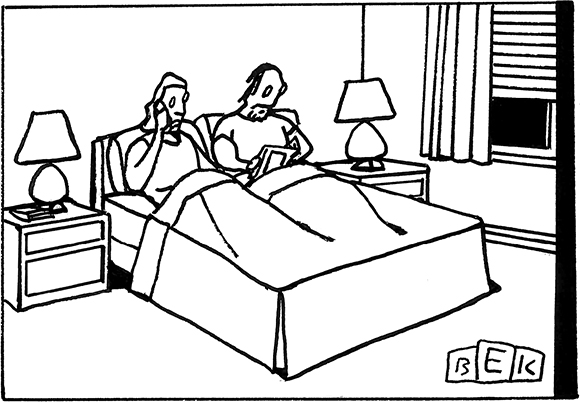
“The parking is terrible, so we decided to never do anything again.”
I live in a place where the majesty of the natural world is both abundant and accessible, and environmental justice is of great interest to me. I know many people working in this field—the passion with which they approach their work is admirable, and the burden of responsibility they carry is heavy. There are groups fighting for renewable energy and sustainable food. Against ocean acidification and toxic waste. Organizations like Outdoor Afro and The Trail Posse are publicly challenging the pop culture fabrication that people of color aren’t interested in the great outdoors. For people in these communities, the weight of their life’s work is heavy, leaving them susceptible to overwhelm.
Pollution is fragmenting families and communities, contributing to collective overwhelm. In Beijing, grappling with the risks of escalating pollution, families consider sending their children to boarding schools in other countries, just to give their children consistent access to clean air. Toxic levels of lead in drinking water in Flint, Michigan, has had devastating physical, developmental, and psychological impact on families in the community and has claimed a number of lives. The direct toll may not be fully understood for decades.
Lack of access to nature contributes to poor health and overwhelm in many communities. Author Richard Louv said, “Nature-deficit disorder is not a formal diagnosis, but a way to describe the psychological, physical, and cognitive costs of human alienation from nature, particularly for children in their vulnerable developing years.” And according to a report from the Institute for European Environmental Policy for Friends of the Earth Europe, inequality in mental well-being is greater among people who report limited access to green areas, compared with those with good access.
Deprivation of natural environments is also a racial justice issue. In certain urban areas in the United States, residents are denied equitable services (banking, insurance, health care, or supermarkets) based on the racial and ethnic composition of those areas. This discriminatory practice, called redlining, has located many people of color in neighborhoods close to heavy industry and has limited or excluded investment in nearby parks and greenspaces. The Parramore neighborhood of Orlando, Florida, is a living example. Parramore was growing, with successful businesses and relatively good economic development until city planners crafted public policy that disadvantaged folks of color. Housing projects were built, moving poor black families in and white families out. And an interstate was built—a symbol of class and racial divide—displacing Parramore homes and businesses and splitting Parramore from downtown Orlando. Entirely encircled by highways, many serious health consequences have been tied to the pollution and noise that inevitably comes from living there—conditions contributing to a generalized state of overwhelm.
In an article entitled “Even Breathing Is a Risk in One of Orlando’s Poorest Neighborhoods,” Julia Craven describes the deteriorating conditions in Griffin Park, a federal housing project in Parramore. “The pollution in Griffin Park and its low-income Parramore neighborhood is violence of a kind Americans tend to ignore. But it is as deliberate and as politically determined as any more recognizable act of racial violence. What happened to Griffin Park was the sum of a series of choices made over the course of a century, the effect of which was to transmute formal segregation into the very air certain people breathe.” She goes on to assert, “Segregation persists, entrenched through housing and zoning policy and through the construction of urban expressways that literally turned existing racial borders to concrete. This was not an unintended consequence; this was the whole point.”
Communities that once thrived are now faced with managing growing homelessness, decaying school systems, and an ever-increasing opioid crisis. Gentrification is displacing once-established low-income, minority residents in urban areas. And in other places, lack of effective public policy in response to factory and mine closures and farm consolidations have left small towns and rural communities in decline. Those left behind or pushed out are struggling to make ends meet, which, as we’ve seen around the world, can contribute to a rise in generalized anxiety, depression, and anger. During an interview with organizer and activist DeRay Mckesson, Kentucky Congressman John Yarmuth said, “The most important issue in Kentucky is the opioid crisis. In my district it’s the number one cause of death right now. We’re losing in my district a person a day to overdoses. It’s just a horrible situation. One statistic that came out the other day was that in my district alone over the last four and a half years there have been 197 million doses of prescription painkillers prescribed—which is like 250 for every man, woman, and child in the district.”
Immigrants, refugees, and anyone deemed “other” are often exposed to conditions that breed overwhelm as fear and rage are displaced onto them in country after country. This, of course, adds to an already heartbreaking cycle, where people who have fled unrest and violence in their country of origin become the target of further persecution in places they were told, or had hoped, they’d find respite.
Another place I have seen communities truly despair is living in the aftermath of violence, whether it be the accumulation of individual acts or a larger-scale attack. While the news cycle moves on and routines resume the veneer of normality, it’s critical to remember that the legacy of collective overwhelm usually outlasts the collective stamina to pay attention or redress harm. When I sat with a group of teachers and administrators a couple of years after the massacre that devastated their school, one teacher said, in an anguished voice, “Those six minutes continue to take so much from us.”



